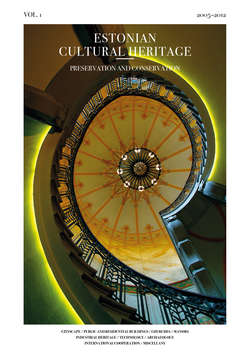Читать книгу Estonian Cultural Heritage. Preservation and Conservation. 2005-2012 - Tallinn Culture And Herit Arts - Страница 9
На сайте Литреса книга снята с продажи.
The second stage – analysis
ОглавлениеDuring the period from 2010 to 2012 the second stage of the project was carried out. It was financed by the Smart Decisions Fund of the State Chancellery (European Social Fund) and carried out by the Department of Cultural Heritage and Conservation of the Estonian Academy of Arts. In addition to the experts of the Academy of Arts specialists from the National Heritage Board, the Tallinn Culture and Heritage Department, the Estonian Open Air Museum and the Union of Estonian Architects were invited to participate in the committee. The main task of the committee was to analyse the sites (all together more than 2,000) highlighted as a result of the fieldwork in counties and to separate the ones which were considered the most valuable or needed more research. In this stage sites were not studied at the county level as in the first stage, but from the typological point of view. By that an overview of each type of buildings was formed and using comparative analysis the best and most vital examples of their kind were picked out for expertise in order to consider whether they met the criteria set for cultural heritage. However, it turned out that different types of buildings were so unevenly represented that making choices on the basis of them could certainly not guarantee a representative overview of our cultural heritage. In these cases the necessity of thematic studies was pointed out. Four thematic studies were completed within the framework of the project (houses of prayer, community centres, rural schoolhouses from 1920 to 1940 and railway architecture). In this stage a lot of valuable sites were included in the list thanks to the experts who happened to know counties or subjects well. The fieldwork in counties resulted with approx. 1,000 possible monuments. By the end of the work in the expert committee approx. 500 sites were kept on the list. Some of them had been added by experts or taken from thematic studies.
The initial aims of the project also included the expertise and documentation of 400 sites. 130 expert reports to a total of 201 sites and 36 files concerning 157 sites were compiled and 4 thematic studies were carried out resulting with the documentation of 646[1.] sites.
Taking into account how long the project lasted it is not surprising that several sites that were considered valuable during the fieldwork in counties had been demolished or spoilt by rebuilding by the end of the project. However, a large number of expert reports were drawn up on sites that are still highly valuable and one day they will help to update the national list of cultural heritage.
